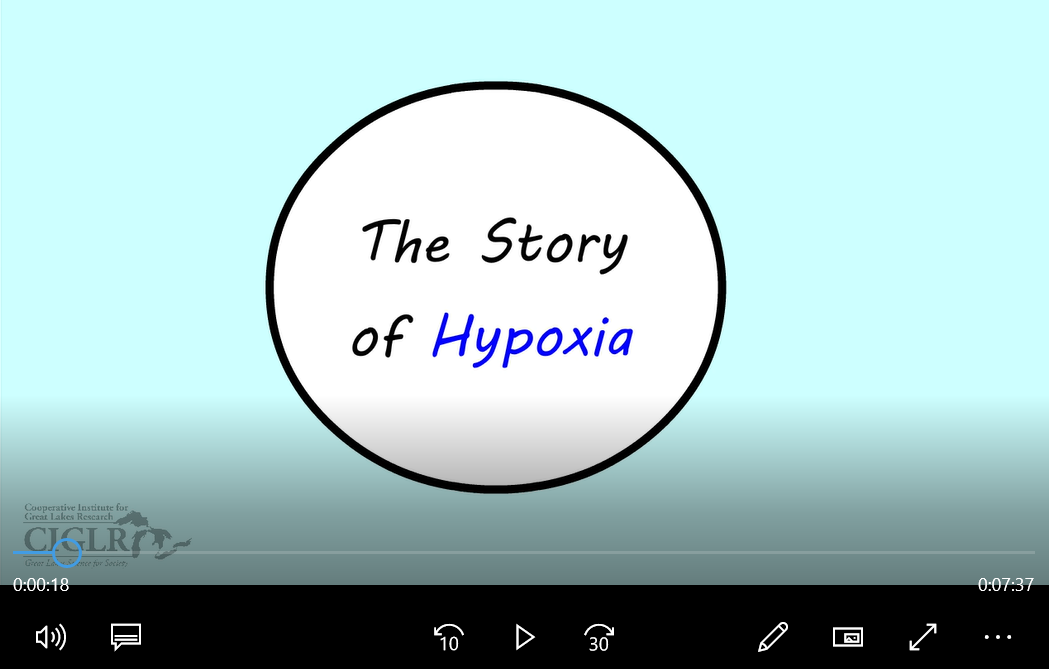Spring 2020 eNewsletter
Spotlight: Communicating Research from Home: Virtual Conference Presentations and Outreach Tools

<Click to expand> Christine Kitchens presented this poster at the virtual 2020 International Association for Great Lakes Research (IAGLR) Meeting. Image Credit: Christine Kitchens.
Every year from June-October, CIGLR and our partners at NOAA GLERL conduct weekly monitoring of harmful algal blooms in western Lake Erie and Saginaw Bay, Lake Huron. This monitoring provides high-quality data to stakeholders throughout the region. Over the course of the summer season, we collect thousands of samples and quantify more than 20 different water quality parameters. Christine Kitchens, Aquatic Ecology Research Technician for CIGLR, is one of the researchers responsible for ensuring the quick analysis of the large number of summer samples so that data can reach stakeholders in a timely manner.
Christine haunts numerous corners of the laboratory during the field season. On a given day, you might find her in a dark room analyzing photosensitive phytoplankton pigments under pale green light or bouncing back and forth between various instruments and processing areas.
Alongside ensuring the quality of existing analyses, she also helps develop new analytical techniques to expand our ability to characterize and understand water quality in the Great Lakes. This past winter, she and Assistant Research Scientist Dr. Casey Godwin developed a modified analytical technique to measure the heavy metal manganese in samples from hypoxic waters in the central basin of Lake Erie.
“It brings me joy to perform the many water quality analyses that I do,” says Kitchens. “We weave together all these different parameters to gain insight into the hidden orchestra that is the biogeochemical state of the Great Lakes. To that end, I strive every day to use and implement my analytical expertise to ensure the quality of the data we deliver to our stakeholders.”
Christine recently presented a poster at the virtual 2020 International Association for Great Lakes Research (IAGLR) Conference showing the results from the technique she modified. In addition, she created CIGLR’s first educational video about hypoxia to help reach our Great Lakes’ community outside of academia.

Click here to watch CIGLR’s first animated, educational video: “Biogeochemistry Breakdown: The Story of Hypoxia.”
“Science should be accessible to everyone, from the seasoned academic to the person who is just beginning their exploration of science. To create that accessibility, we as researchers should think about the variety of ways people learn and understand science, whether it be through intentional individual discussions or through colorful visual displays. I enjoy engaging in science communication at all levels because I want to be a researcher who helps build bridges and encourages people to keep asking questions and thinking critically about the world around them.”
